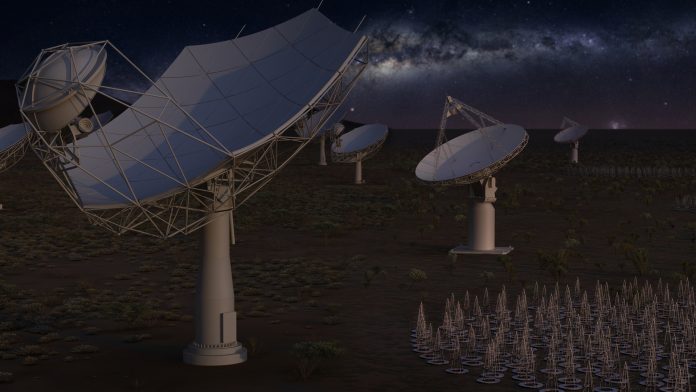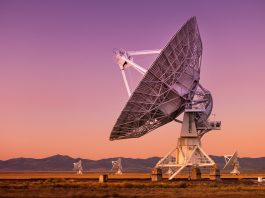The Innovation Platform spoke with the Square Kilometre Array (SKA) Organisation’s Director General, Philip Diamond, about building the world’s largest radio telescope.
The Square Kilometre Array (SKA) is one of the biggest science projects ever to be undertaken. With a planned use of initially 200 dishes and over 130,000 low-frequency antennas, the SKA is an attempt at building the world’s largest radio telescope. This will enable astronomers to monitor the sky in unprecedented detail and survey the entire sky much faster than any system currently in existence.
While the SKA is a truly international effort, the telescopes themselves will be co-hosted in two countries – the South African Karoo region (which will host the dishes) and Murchison Shire in Western Australia (which will host the low-frequency antennas). The project’s headquarters is hosted at the UK’s Jodrell Bank site.
The project has recently passed several critical milestones on the path towards beginning construction, and The Innovation Platform spoke with the organisation’s Director General, Philip Diamond, about what this means for the SKA and the stage the project has now reached.
Perhaps you could begin by outlining the SKA’s science objectives and what stage the project has now reached?
We are designing (and next year will start building) the world’s largest radio telescope – the SKA is actually two radio telescopes: one in Western Australia and one in South Africa. It is a global project: we have 14 countries involved as a part of the organisation at the moment, providing the funding, with the headquarters at Jodrell Bank near Manchester, UK.
The two radio telescopes will individually be the largest radio telescope in the world. The low frequency telescope will be situated in Australia, while South Africa will see 197 dishes, each about 15 metres in diameter and overall larger than any radio telescope that has come before.
Regarding the science goals, it is not too much to say that we want to be able to uncover the entire history of the Universe and, indeed, to understand the Universe’s future. We will be able to study from the era just after the Big Bang (although, of course, we won’t actually be able to see the Big Bang itself); we will be able to look back in time to just a few hundred thousand years after the Big Bang, and so see the first stars and first galaxies forming; we will be able to actually watch the Universe evolve up to the present day. In addition to this, there is a huge range of other areas that the SKA will be active in, such as the search for prebiotic molecules and the origins of life, as well as magnetic fields and an exploration of pulsars and their relationship with the phenomenon of fast radio bursts.
All of these will be key projects for the SKA; the project takes on a massive range of science, and along the way many of the technologies that are developed to make the SKA a success will find their way into the public sphere to benefit society and the taxpayer.
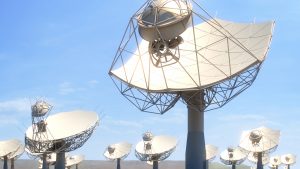
How are you approaching the commercialisation element of the project?
We have established collaborations with universities and research organisations; they are responsible for much of the R&D for the new technologies, and they are already developing spin-off companies to take them out into the market. In the UK, this is happening at Oxford and Cambridge universities, but it is also taking place elsewhere – our Dutch, Italian, and Australian partners, for instance, are all developing spin-offs, and because the project is still in the relatively early stages, this is only going to grow.
The SKA in itself is not involved in the commercialisation of the new technologies, but we have set up the necessary processes to make it happen, and we actively encourage our partner organisations to become involved. The only condition we have is that we are granted free access to the intellectual property, which we need to build the SKA. It is a very fruitful partnership.
How does the SKA work to ensure that local communities and businesses are utilised as much as possible in the host countries?
This has always been our aim, and it has continued to grow as we get closer to the construction stage of the project, as many elements of this are more easily managed in the host country. This includes building the infrastructure – such as the very high-tech buildings we are going to need, which must be shielded so that the radio interference doesn’t get out and ruin the observations, and so on. Much of this is more easily done with local companies. That is all a part of the procurement plan that we put together some time ago.
Partners in the host countries have developed strong programmes with local communities including capacity and skills building, training, etc., and members of those communities as well as local industries have been involved in the development of precursor facilities there, so we are planning to capitalise on the experience they have acquired.
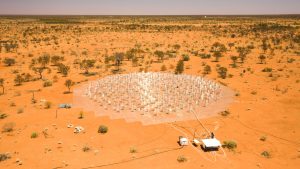
How has the COVID-19 lockdown affected the work you have been able to do? Has it made co-ordinating such a huge project more of a challenge? Or has it had an impact on your ability to work with industry?
We are currently finalising the design activities and are writing the construction proposal, which the relevant governments must approve. Thus, our involvement with industry at this phase is essentially planning for that the procurement phase, and so that hasn’t been disrupted.
Of course, we have been disrupted in terms of being able to access the sites because of travel restrictions and the social distancing restrictions that are in place. This has also meant that some of the testing and prototyping, which involves some industries in both South Africa and Australia, has had to be stalled. But that will restart in the near future.
Despite the disruption being caused by COVID-19, the SKA has recently achieved several positive milestones, including the System Critical Design Review and South Africa ratifying the SKA convention. How important are these developments, and how difficult were they to achieve?
They were fantastically important; they were big milestones for us. And there were two others as well – we had a review of our operations plan, which outlines how we will operate the SKA once it has been built, and also a Cost Audit, which involved checking our numbers and processes. Both resulted in very positive outcomes.
These were all things that we had been working towards for weeks or even months, which meant that the majority of the work had been done before the shutdown began, which helped. Following their completion, we needed to finish the necessary paperwork and address any recommendations and advice that we had received, but we have been able to do that while working from home.
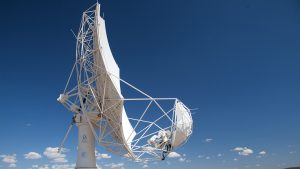
Regarding the Cost Audit of the SKA1 construction plans, is the project on budget? Were there any important recommendations to come from this?
Whilst going through design process, we had been establishing the budget. That takes time to complete, but it was achieved some 18 months ago – although, of course, it may fluctuate slightly to the value of a fraction of a percent as we finalise things and move forwards.
The System Critical Design Review and the Cost Audit both looked in-depth at certain areas to try and verify these costs, as well as what is known as the ‘basis of estimates’ – the labour rates in different countries, the cost of materials, and so on. And they found nothing of concern.
They were also very complimentary about the level of documentation we have. That is, we have literally thousands of design documents within our document management system, and there are people whose sole responsibility within the project is to oversee that document management and what is known as the ‘configuration control’, where they also control and keep track of the versions of documents as changes are made.
The review looked at those sorts of processes, and while they did provide us with some recommendations, they were all relatively minor, and we’ve delivered on those already.
I was also very pleased with the Cost Audit, which was conducted by an external systems engineering company. The audit has shown that the quality of the work that has been done – and especially that which has been undertaken by my Deputy Director-General, Joe McMullin, who oversees the engineering activities – has been to a very high standard.
What is next for the SKA – perhaps from both the technical and more ‘political’ standpoints?
We know the scope of what we intend to build, and we have a strong secure estimate of the cost. We are translating all of that into a Construction Proposal, which will be a high level substantial document that provides something of a cap to the pyramid created by the many thousands of other documents which have come before it. These include the highly technical engineering interface control documents. At the top of this pyramid, the Construction Proposal will sit with another document, the Observatory Establishment and Delivery Plan, which is essentially the plan for how we will operate the telescopes once they have been built and, indeed, the plan for how we will run the observatory.
Those two key documents are now in the final stages of preparation and are being reviewed internally. The intent is then for us to put those documents before the Board later this year, and related to that, the Council of the new Observatory, the intergovernmental organisation that sits under the treaty, will also hopefully come into existence at some point this year. On that will sit all the governments involved in the project, and they will look at the construction proposals and at all the reviews and will hopefully then give us the green light to begin construction. That, of course, is dependent upon them having collected funding to enable us to move forward.
From the technical side, then, the key things moving forwards are the finalisation of the two plans, which is the culmination of almost a decades worth of work; and on the political side, it is to get the treaty ratified, the establishment of the observatory, and then to receive the go signal. This is what we are working towards.
Professor Philip Diamond
Director General
Square Kilometre Array (SKA)
+44 (0)161 306 9600
enquiries@skatelescope.org
Tweet @SKA_telescope
www.skatelescope.org
Please note, this article will also appear in the third edition of our new quarterly publication.

